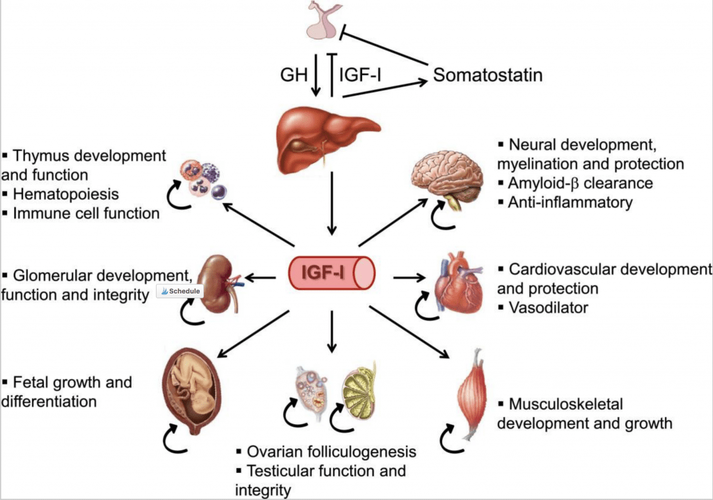D
Deleted member 183048
- Joined
- Jul 17, 2025
- Posts
- 24
- Reputation
- 27
IGF-1 Maxxing: The Overlooked Axis of Aesthetic Optimization
Insulin-like Growth Factor 1 (IGF-1) is a peptide hormone downstream of growth hormone, fundamentally responsible for cell growth, collagen synthesis and muscular hypertrophy. —especially during developmental years. In adults, elevated IGF-1 can still promote subtle skeletal remodeling, improve skin quality via increasing dermal thickness and facilitate lean mass retention, all key to getting lean and increasing bonemass. IGF-1 directly stimulates osteoblast proliferation and differentiation, acting through the PI3K/Akt and MAPK pathways to drive anabolic activity in bone tissue. Unlike growth hormone, which works indirectly, IGF-1 binds to receptors on bone surfaces, particularly in the mandible, zygomatic arch, and orbital ridge—areas very critical to facial structure. It enhances periosteal apposition (outer bone growth) and increases mineral density, which contributes to sharper contours and improved load-bearing capacity. During puberty, high IGF-1 levels help capitalize on the epiphyseal growth plate's responsiveness, but even in adults, it maintains bone turnover and can subtly improve structural prominence with consistent stimulation
Endogenous Maxxing: Nutrition, Sleep, and Strategic Fasting
Optimal IGF-1 levels are achievable through lifestyle manipulation. You gotta have a High-quality protein intake (especially leucine-rich sources like dairy and eggs), deep sleep (Stage 3 & REM), and time-restricted eating windows can upregulate GH secretion and subsequent IGF-1 release. Conversely, chronic caloric restriction or excessive fasting suppresses IGF-1—bad for aesthetics despite transient fat loss. Collagen-rich bone broth, liver, and zinc/magnesium intake also support IGF signaling pathways, enhancing skin elasticity and skeletal structure subtly over time
Insulin-like Growth Factor 1 (IGF-1) is a peptide hormone downstream of growth hormone, fundamentally responsible for cell growth, collagen synthesis and muscular hypertrophy. —especially during developmental years. In adults, elevated IGF-1 can still promote subtle skeletal remodeling, improve skin quality via increasing dermal thickness and facilitate lean mass retention, all key to getting lean and increasing bonemass. IGF-1 directly stimulates osteoblast proliferation and differentiation, acting through the PI3K/Akt and MAPK pathways to drive anabolic activity in bone tissue. Unlike growth hormone, which works indirectly, IGF-1 binds to receptors on bone surfaces, particularly in the mandible, zygomatic arch, and orbital ridge—areas very critical to facial structure. It enhances periosteal apposition (outer bone growth) and increases mineral density, which contributes to sharper contours and improved load-bearing capacity. During puberty, high IGF-1 levels help capitalize on the epiphyseal growth plate's responsiveness, but even in adults, it maintains bone turnover and can subtly improve structural prominence with consistent stimulation
Endogenous Maxxing: Nutrition, Sleep, and Strategic Fasting
Optimal IGF-1 levels are achievable through lifestyle manipulation. You gotta have a High-quality protein intake (especially leucine-rich sources like dairy and eggs), deep sleep (Stage 3 & REM), and time-restricted eating windows can upregulate GH secretion and subsequent IGF-1 release. Conversely, chronic caloric restriction or excessive fasting suppresses IGF-1—bad for aesthetics despite transient fat loss. Collagen-rich bone broth, liver, and zinc/magnesium intake also support IGF signaling pathways, enhancing skin elasticity and skeletal structure subtly over time


